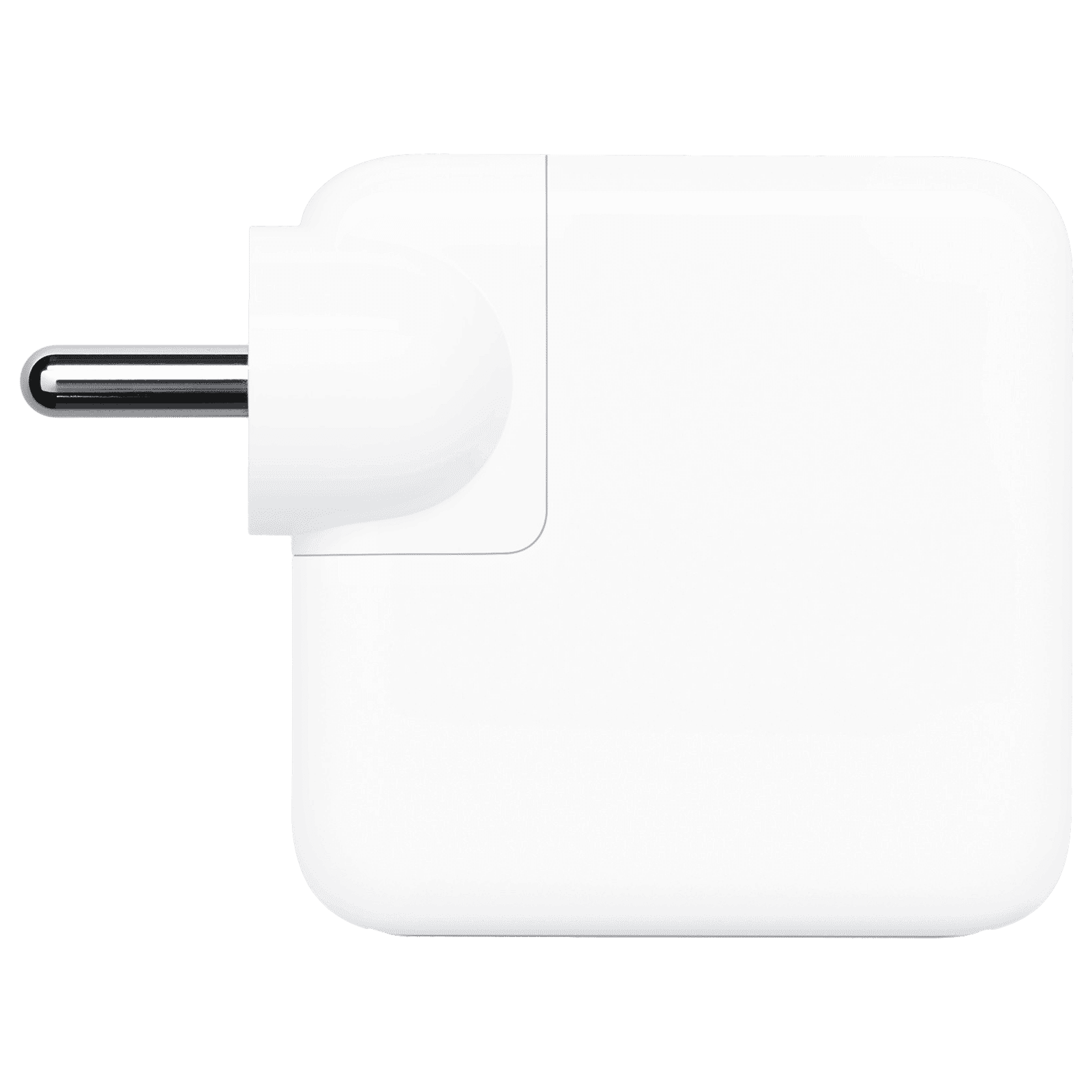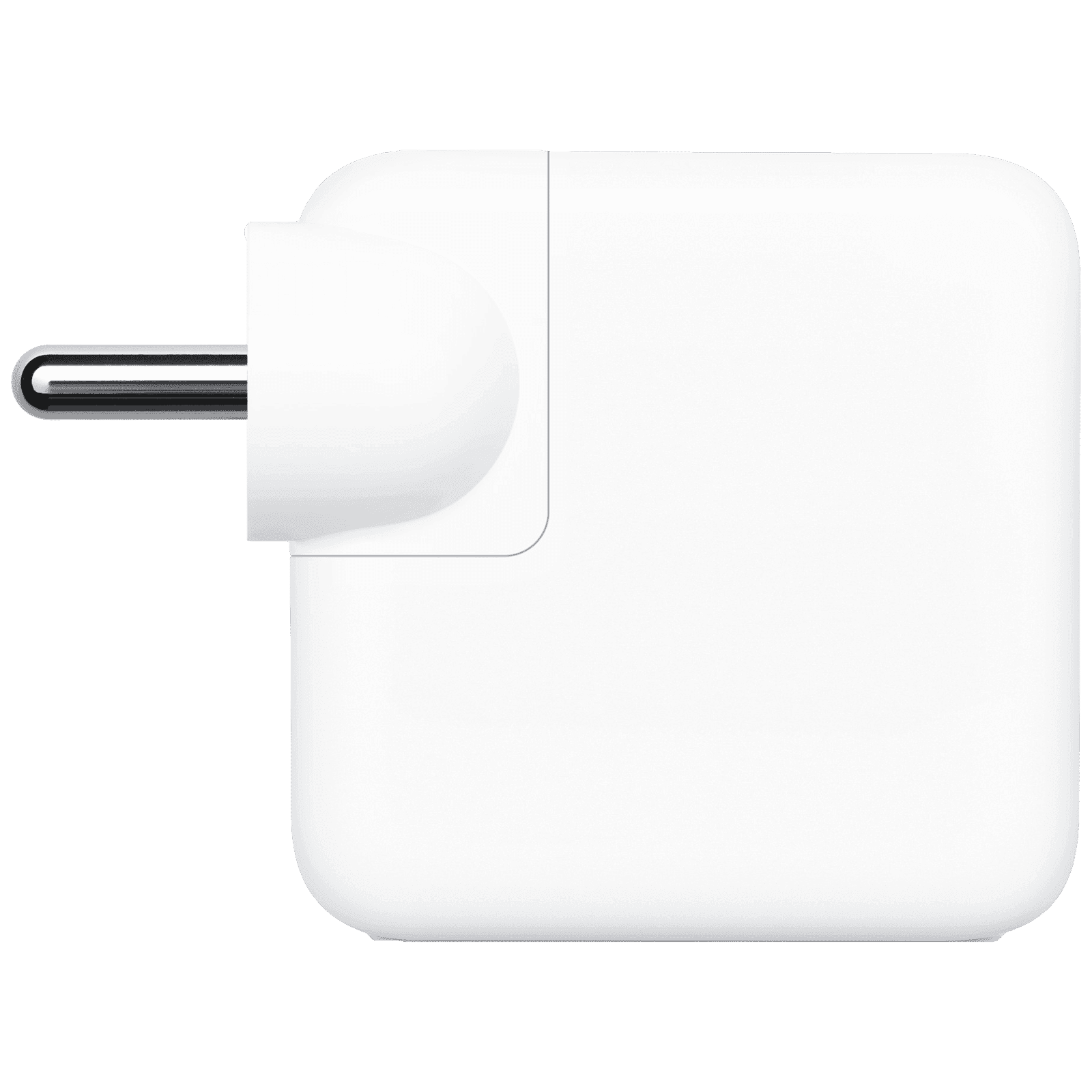%20(Presentation)%20(1600%20x%20600%20px)(73)-40dbda35-57a2-4a29-9154-47bed5023908.webp&w=3840&q=75)
Consumer Electronics
•05 min read

Buy Apple 30W Type C Fast Charger (Adapter Only, Efficient Charging, White) online at best prices from Croma. Check product details, reviews & more. Shop now!
Charging technology has evolved rapidly, and Apple has been a driving force in this transformation. The introduction of the Apple USB-C to Lightning innovation is redefining the way we connect, charge, and transfer data. At Tata Neu, we make tech smarter with exclusive NeuCoin rewards, expert support, and express delivery that ensures your devices are always ready when you are. In this exploration, we uncover the key benefits, advanced design, and future-proof capabilities of this technology, showing how it enhances everyday device usage for millions of users.
Apple’s journey from the traditional Lightning connector to embracing the robustness of USB-C is marked by both technological evolution and global trends. The Lightning connector played an instrumental role in standardising charging solutions for Apple devices over the years. However, with the growing demand for universal standards and wider device compatibility, integrating USB-C—a connector known for its versatility—became a natural progression. This move signifies Apple’s dedication to staying ahead of technological trends and meeting user expectations for faster and more efficient charging and data solutions.
Integrating USB-C offers several benefits, including faster data transfer rates and improved charging speeds that enhance user experience. The convergence of USB-C technology with the iconic Lightning interface ensures that devices can enjoy improved functionality. Consumers find it easier to integrate their accessories, knowing that the technology allows compatibility with a vast range of USB-C enabled gadgets. This synergy not only simplifies the charging process but also helps streamline data transfers, making it an essential evolution for busy professionals and tech enthusiasts alike.
The Apple USB-C to Lightning cable is celebrated for its exceptional design and build quality that stands as a benchmark in charging solutions. Apple-certified Lightning cable standards ensure that every product delivers reliable performance and durability. The meticulous engineering behind these cables ensures safety and efficiency, with user-friendly designs that promote hassle-free connectivity. This results in enhanced performance, even when used for intensive data tasks.
One of the most appealing features of the Apple USB-C to Lightning cable is its fast-charging capability. By combining the power of USB-C with the proven reliability of the Lightning system, users can experience significantly reduced charging times. For instance, pairing the cable with an appropriate adapter, such as a 20W or higher wattage adapter, dramatically cuts down on charging time. According to Apple specifications, this setup can charge an iPhone up to 50% in just 30 minutes. This fast charging efficiency is especially beneficial for modern lifestyles where time is at a premium. Whether you are a student, a young professional, or part of a bustling family, reducing downtime is a clear advantage.
The technical design of the cable enhances compatibility with a broad range of Apple products, from iPhones and iPads to accessories that benefit from the Lightning adapter ecosystem. Its versatility means that while it is optimised for Apple devices, it can efficiently serve non-Apple gadgets equipped with USB-C ports, allowing for reliable data transfer and performance consistency. This cross-device functionality simplifies everyday routines and strengthens user confidence in the technology they rely on.

Buy Apple MW2K3HN/A 35W Type C 2-Port Fast Charger (Adapter Only, White) online at best prices from Croma. Check product details, reviews & more. Shop now!
There is often confusion between USB-C to Lightning cables and USB-C to USB-C cables. Apple continues to use the Lightning connector on one end to ensure its unique benefits remain intact. The Lightning connector brings with it proprietary innovations that align with Apple’s overall ecosystem, ensuring a perfect blend of form and function. It offers a secure connection, ease of use, and compatibility with a myriad of accessories developed specifically for Apple devices.
Using Apple-certified Lightning cables is fundamental for maintaining performance and avoiding potential damage. With the growing market of charging accessories, ensuring authenticity by selecting a certified product is critical. Certified products undergo rigorous testing to meet Apple’s strict standards, ensuring that users receive both safety and efficiency. Straying from genuine accessories may compromise the benefits and durability that come with trusted, Apple-certified orders.
To truly capitalise on the rapid charging capabilities offered, pairing the Apple USB-C Lightning charger with the right adapter is essential. For those aiming to maximise efficiency, it is important to check the adapter’s wattage and ensure it meets the minimum required threshold for fast charging. Additionally, taking care of the cable by avoiding excessive bending or undue stress helps maintain its longevity. Following these best practices will ensure that the charging experience not only remains fast but also consistently reliable.
The benefits of the Apple USB-C to Lightning cable extend beyond just charging. The design supports efficient data transfer, making it an excellent tool for transferring large files quickly and securely between devices. When compared to older charging standards, users notice a measurable increase in the speed of data exchange, which is crucial for professionals who rely on rapid syncing between devices. This means that whether you're updating a device’s software or transferring important media files, the cable performs seamlessly to keep you equipped for any challenge.
Insight Corner: “Did You Know? Apple’s USB-C to Lightning cable, paired with a 20W adapter, can charge an iPhone up to 50% in just 30 minutes (according to Apple specifications). This makes it one of the fastest and most efficient charging solutions available today.”

Buy POWERUP Type A to Lightning 9.9 Feet (3M) Cable (Sync and Charge, Black) online at best prices from Croma. Check product details, reviews & more. Shop now!
The question of whether Apple will fully transition to USB-C on all its devices remains a topic of keen interest. Current trends and regulatory considerations suggest that further integration of USB-C is likely. However, the blend of Lightning technology with USB-C elements stands as a strategic move, ensuring that users can enjoy the best of both realms. This approach supports sustainability initiatives while catering to the growing demand for interoperability across devices. As the industry evolves, users can anticipate even more streamlined solutions that promise both speed and reliability.
Apple’s measured approach to integrating USB-C technology not only serves its ecosystem but also has broader implications for the tech industry. As more manufacturers adopt similar standards, the result will be a more unified and user-friendly tech landscape. The move towards USB-C to Lightning connectivity signifies a trend where convenience meets cutting-edge technology, making it easier for consumers to switch between devices and enjoy a fluid, connected experience at home or on the go. This ultimately empowers users, ensuring they have access to the most efficient charging and connectivity solutions available.
USB-C to Lightning cables are designed specifically for Apple devices, offering enhanced charging speeds and data transfer tailored for the Lightning port. In contrast, USB-C to USB-C cables are used for devices equipped with USB-C ports on both ends.
While many adapters may work, it is advisable to use Apple-certified adapters to ensure optimal performance and compatibility with your charging setup.
Most iPhones from iPhone 8 onwards and several recent iPad models support fast charging, provided they are paired with an appropriate 20W or higher adapter.
Although the cable is optimised for Apple devices, it can be used for charging and data transfer with non-Apple gadgets featuring a USB-C port, albeit with potentially limited functionality.
Look for the MFi certification logo on the packaging or in the product description to verify that the cable meets Apple’s standards for quality and performance. This ensures you receive a safe and reliable product.
Apple’s USB-C to Lightning technology represents a groundbreaking leap in charging and connectivity. It offers users a blend of speed, versatility, and exceptional compatibility that underscores Apple’s commitment to innovation. Its carefully designed features not only provide faster charging and efficient data transfer but also set a new benchmark for future technology trends, ensuring that consumers enjoy a reliable and seamless experience across their devices. Discover these innovations and enjoy the added benefits of Tata Neu, where every purchase earns you NeuCoins along with trusted after-sales support. Experience a smarter charging journey and enjoy the peace of mind that comes with using cutting-edge, trusted technology.